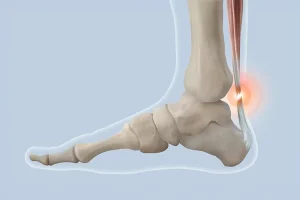Conditions Treated

Is chronic joint pain and persistent inflammation affecting your quality of life? Synovectomy is an effective surgical solution for those suffering from joint conditions that are resistant to conventional treatments.
Discover how this procedure can help you regain your mobility and daily comfort.
Book an Appointment
What is synovectomy?
Synovectomy is a surgical procedure that involves the partial or total removal of the synovial membrane of a joint.
This procedure is recommended for patients suffering from chronic inflammatory conditions, such as rheumatoid arthritis, or synovial lesions that do not respond to conservative treatments.
Who can benefit from synovectomy?
This procedure is indicated for patients with:
- Chronic inflammation of the synovial membrane;
- Advanced rheumatoid arthritis;
- Synovial damage caused by trauma;
- Chronic recurrent synovitis.

Types of synovectomy
Partial synovectomy
It is performed when synovial inflammation is not widespread throughout the entire joint, but only in certain areas. This method is preferred in order to preserve as much of the joint structure as possible, thus reducing the risk of postoperative complications.
Total synovectomy
It is used when the entire synovial membrane is affected, requiring complete removal. It is usually recommended for patients with severe rheumatoid arthritis or other extensive chronic conditions.
Knee synovectomy
This procedure is performed to treat severe synovial inflammation in the knee caused by conditions such as rheumatoid arthritis or chronic synovitis. The procedure can be performed arthroscopically (minimally invasive) or through open surgery in cases of severe joint damage.
Meniscal synovectomy
It is performed in cases where inflammation of the synovial membrane is associated with damage to the meniscus. The procedure involves partial or total removal of the affected synovial membrane, depending on the severity of the injury, to relieve pain and prevent further damage to the joint.
How does the synovectomy procedure work?
The procedure can be performed either through open surgery or arthroscopy. The procedure involves:
- Local, spinal, or general anesthesia;
- Accessing the joint through small incisions (arthroscopy) or larger incisions (open surgery);
- Removal of the affected synovial membrane;
- Suturing of the incisions and application of a bandage.
Risks and complications
Like any surgical procedure, synovectomy involves certain risks:
- Infections;
- Bleeding;
- Postoperative pain;
- Joint stiffness;
- Recurrence of synovial inflammation.
For optimal recovery, patients are advised to follow a physical therapy program and comply with the specialist’s instructions.
Why choose synovectomy?
If pain and inflammation are affecting your quality of life and conservative treatments are no longer working, synovectomy may be the solution. Schedule a consultation with a specialist to find out if you are a suitable candidate!
Why choose VenArt Clinic?
- Team of specialized doctors with extensive experience;
- Modern technology and innovative methods;
- Minimally invasive treatments for rapid recovery;
- Personalized approach for each patient;
- Proven results and numerous success stories in orthopedic surgery;
- Warm and professional atmosphere;
- Complete services in one location.
Schedule an appointment!
Find out how you can manage your symptoms and what treatment options are available.
Our specialists will answer all your questions and provide you with a treatment plan tailored to your needs.
Medical Team
Frequently Asked Questions
What is synovectomy?
Synovectomy is a surgical procedure that removes the affected synovial membrane to reduce inflammation and joint pain.
When is synovectomy necessary?
It is recommended in cases of rheumatoid arthritis, chronic synovitis, or other joint conditions that do not respond to conservative treatments.
How is synovectomy performed?
It can be performed either through open surgery or arthroscopy (minimally invasive), depending on the severity of the condition.
How long does recovery take after synovectomy?
Recovery time varies from a few weeks to a few months, depending on the type of procedure and the patient’s response to physical therapy.
Is synovectomy a permanent solution?
Although it can improve symptoms in the long term, inflammation may return in some cases, especially in patients with rheumatoid arthritis.
What are the risks involved in this procedure?
Possible risks include infection, bleeding, joint stiffness, and recurrence of inflammation.
Can synovectomy be performed on any joint?
Yes, but it is most commonly performed on the knee, elbow, shoulder, ankle, and wrist.








